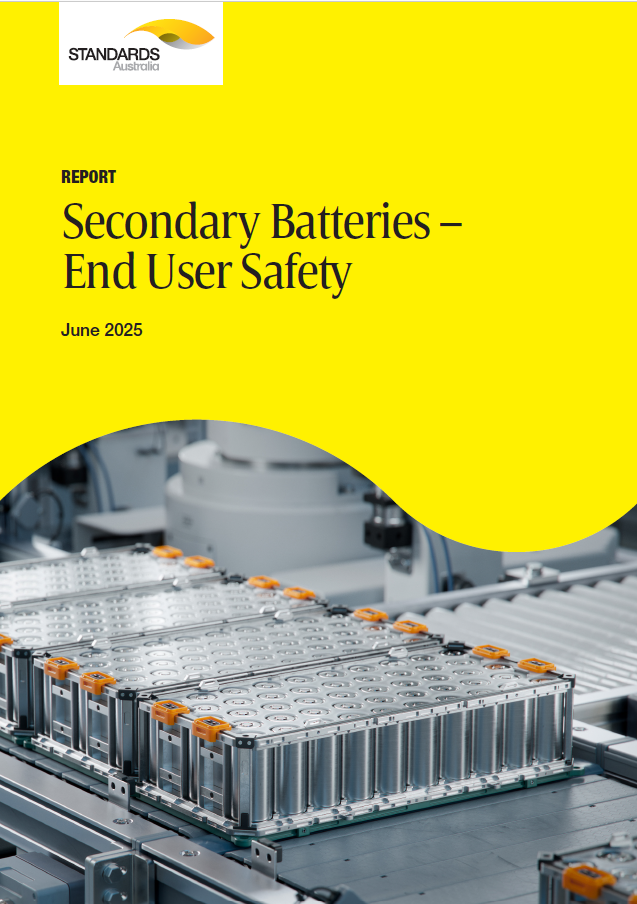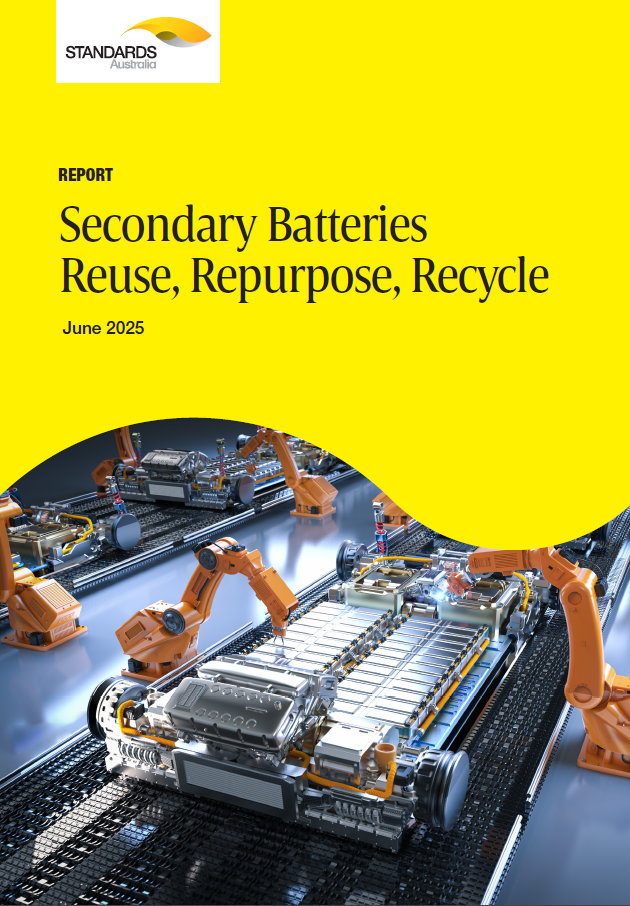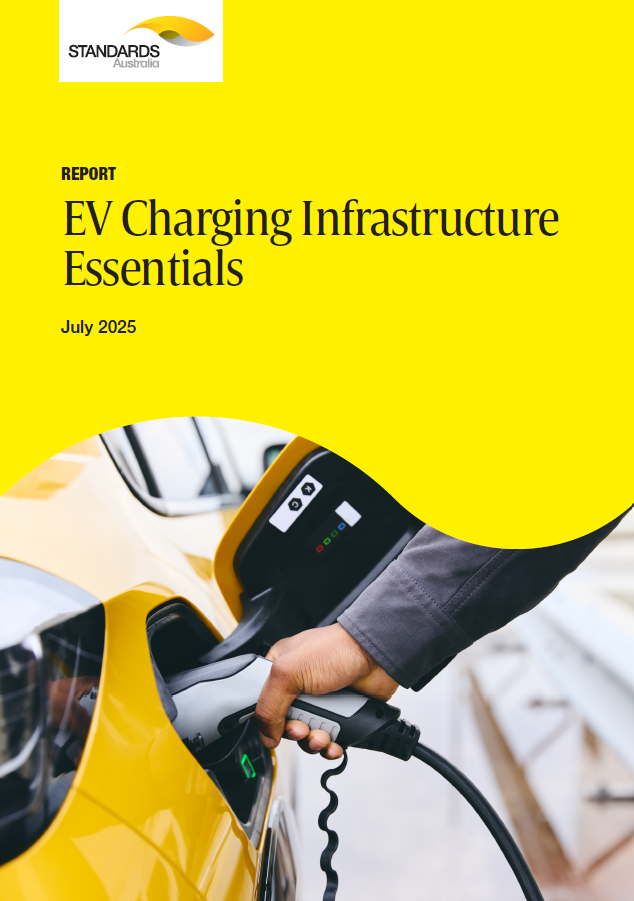Strengthening Australia’s Battery and EV Standards for Net Zero
Statements
Standards Australia has been commissioned by the Department of Finance to develop a series of standards roadmaps supporting the transition to net zero. These reports focus on three key areas:
- Secondary Batteries: End User Safety
- Secondary Batteries: Reuse, Repurpose and Recycle
- Electric Vehicle (EV) Charging Infrastructure Essentials
Developed in collaboration with industry and with the support from the Department of Industry, Science and Resources and the Department of Climate Change, Energy, the Environment and Water, the reports identify opportunities to strengthen Australia’s standards landscape in line with international benchmarks.
Secondary (rechargeable) batteries are critical to energy storage, grid stability, and powering electrical devices. While Australia is a major producer of raw materials like lithium, most battery manufacturing occurs offshore. The National Battery Strategy aims to boost domestic production and productivity and productivity, with standards playing a key role in ensuring safety, reliability, and performance.
Establishing a domestic recycling industry would support sustainable production of battery active materials and assist in future market access. As demand for lithium-ion batteries grows, Australia faces challenges due to limited feedstock, safety risks, and high costs. Currently, black mass from recycling is exported for refinement. With potential to become a $3.1 billion industry, standards are essential to guide safe reuse, repurposing, and recycling practices.
Standards also underpin the safety and interoperability of EV charging systems. With EV uptake accelerating, the National Electric Vehicle Strategy aims to expand access to EVs and charging infrastructure. The EV Charging Infrastructure Essentials report recommends updating existing standards, adopting international benchmarks, and developing new labelling standards for vehicle-to-grid technologies – supporting Australia’s energy transition and global competitiveness.
As part of this work, Standards Australia was tasked with:
- Reviewing existing standards for secondary batteries and EV charging infrastructure
- Identifying international standards suitable for adoption or adaption for the Australian context
- Assessing the need for revising or developing Australian-specific standards\
Implementation of the recommendations is currently underway.
Access the reports:

Read the
Secondary Batteries:
End User Safety
report

Read the
Secondary Batteries:
Reuse, Repurpose and Recycle
report

Read the
Electric Vehicle (EV)
Charging Infrastructure Essentials
report

Standards Australia has been commissioned by the Department of Finance to develop a series of standards roadmaps supporting the transition to net zero. These reports focus on three key areas:
- Secondary Batteries: End User Safety
- Secondary Batteries: Reuse, Repurpose and Recycle
- Electric Vehicle (EV) Charging Infrastructure Essentials
Developed in collaboration with industry and with the support from the Department of Industry, Science and Resources and the Department of Climate Change, Energy, the Environment and Water, the reports identify opportunities to strengthen Australia’s standards landscape in line with international benchmarks.
Secondary (rechargeable) batteries are critical to energy storage, grid stability, and powering electrical devices. While Australia is a major producer of raw materials like lithium, most battery manufacturing occurs offshore. The National Battery Strategy aims to boost domestic production and productivity and productivity, with standards playing a key role in ensuring safety, reliability, and performance.
Establishing a domestic recycling industry would support sustainable production of battery active materials and assist in future market access. As demand for lithium-ion batteries grows, Australia faces challenges due to limited feedstock, safety risks, and high costs. Currently, black mass from recycling is exported for refinement. With potential to become a $3.1 billion industry, standards are essential to guide safe reuse, repurposing, and recycling practices.
Standards also underpin the safety and interoperability of EV charging systems. With EV uptake accelerating, the National Electric Vehicle Strategy aims to expand access to EVs and charging infrastructure. The EV Charging Infrastructure Essentials report recommends updating existing standards, adopting international benchmarks, and developing new labelling standards for vehicle-to-grid technologies – supporting Australia’s energy transition and global competitiveness.
As part of this work, Standards Australia was tasked with:
- Reviewing existing standards for secondary batteries and EV charging infrastructure
- Identifying international standards suitable for adoption or adaption for the Australian context
- Assessing the need for revising or developing Australian-specific standards\
Implementation of the recommendations is currently underway.
Access the reports:

Read the
Secondary Batteries:
End User Safety
report

Read the
Secondary Batteries:
Reuse, Repurpose and Recycle
report

Read the
Electric Vehicle (EV)
Charging Infrastructure Essentials
report

Email:

Email:


